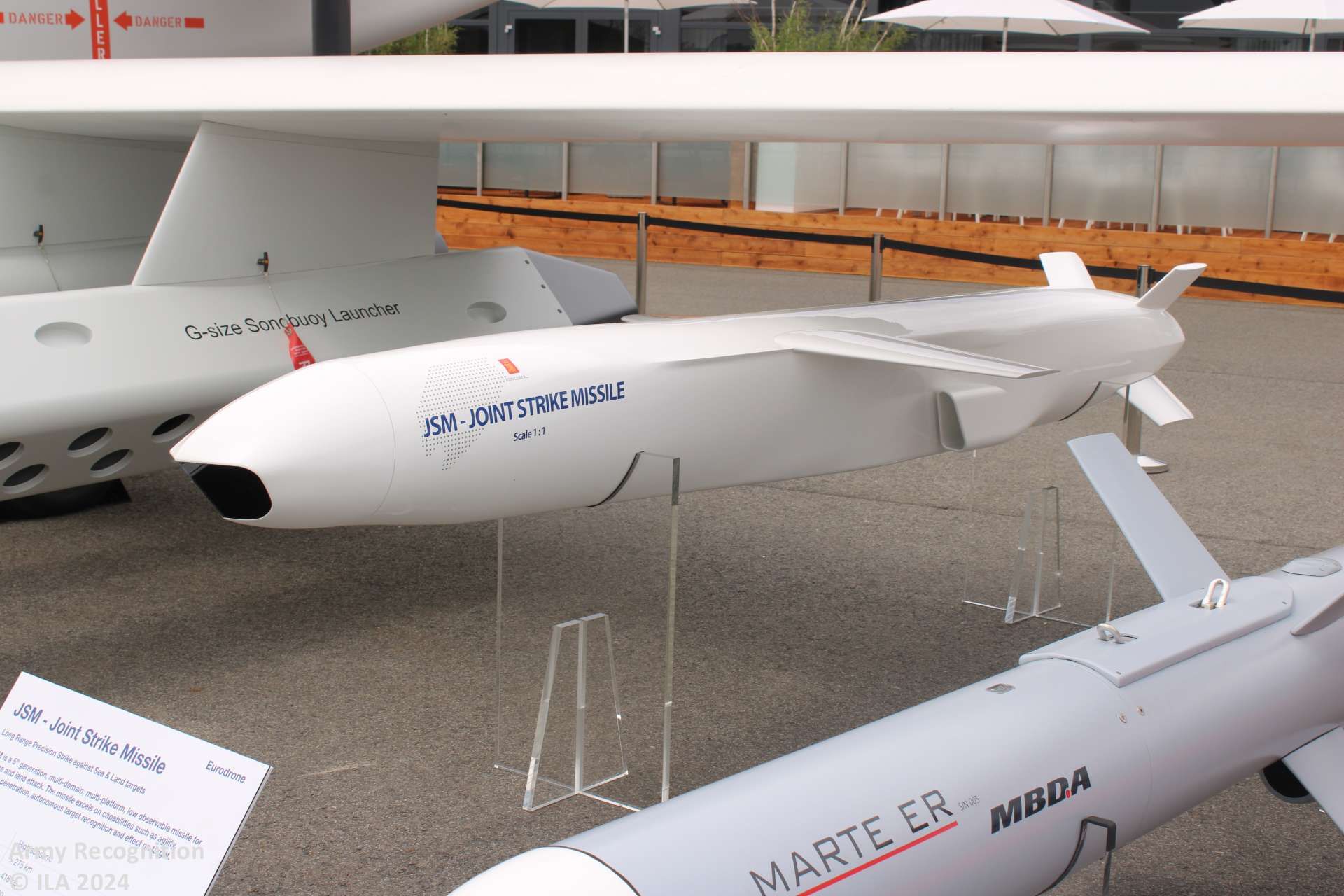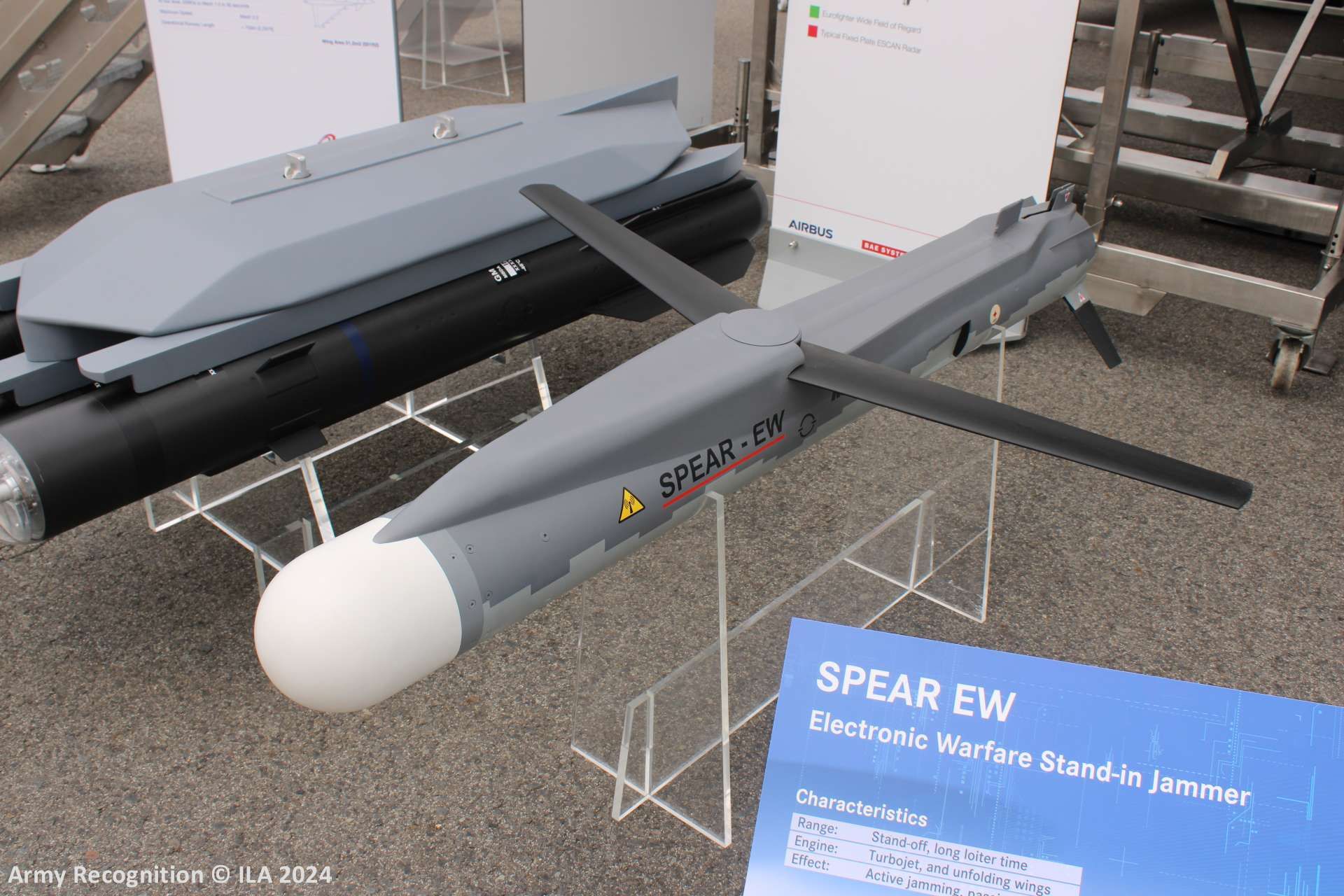Breaking News
Italy to invest €682 Million for F-35B armaments including JSM and Spear 3 missiles.
On July 4, 2024, the Italian government submitted a request for parliamentary review to acquire the necessary armaments to achieve Full Operational Capabilities (FOC) for the fifth-generation embarked F-35B Short Take-Off and Vertical Landing (STOVL) aircraft. The program, with a projected total cost of 682 million euros, has 650.07 million euros already allocated from the ordinary defense budget.
Follow Army Recognition on Google News at this link

The F-35B can carry a wide range of weapons, including guided bombs (GBUs), air-to-air and air-to-surface missiles. (Picture source: Lockheed Martin)
The legislative framework requires Parliament to review programs related to acquiring weapon systems, facilities, and means directly intended for national defense. These programs are reviewed by the defense committees of both the Senate and the House of Representatives, which provide the necessary opinions. This review process must be completed within forty days of assignment. If the government does not align with the committees' conditions or if the committees issue a negative opinion, the draft decree is resubmitted with the government's counterarguments for a final opinion within thirty days. If a majority absolute negative opinion is issued based on non-compliance with the Multi-Year Defense Program (DPP), the program cannot proceed. Otherwise, the government may proceed with the decree's adoption.
The armament program, developed in international cooperation, aims to replace the legacy AV-8B aircraft line with a projected operational lifespan of at least 30 years. This transition addresses the increasing complexity of current and future operational scenarios. The program includes 15 F-35B Short Take-Off and Vertical Landing (STOVL) aircraft, requiring armaments and self-protection systems to support and protect the Naval Squadron effectively.
The specific armaments to be acquired include various types of guided bombs (GBUs), air-to-air and air-to-surface missiles, and 25mm cannon rounds. The detailed list of weapons comprises Small Diameter Bomb - SDB II (GBU-53) for the 250 lbs class, BLU-111 bomb body with guidance kits for GBU-12, GBU-38, and GBU-54 for the 500 lbs class, and BLU-110 bomb body with guidance kits for GBU-32 for the 1000 lbs class. Air-to-air missiles include AIM-9X Sidewinder for short-range engagements, AIM-120 AMRAAM for medium-range engagements, and Meteor for long-range engagements. Air-to-surface missiles include JSM (Joint Strike Missile) for long-range naval targets and Spear 3 for medium-range engagements. The program also covers 25mm Cannon Rounds for the onboard 25mm GAU-22/A cannon, a four-barrel version of the GAU-12/U Equalizer five-barrel 25 mm Gatling-type rotary cannon.

The Joint Strike Missile (JSM), developed by Kongsberg Defence Systems in collaboration with Raytheon, is a long-range, precision-guided missile that can be carried internally to maintain stealth. (Picture source: Army Recognition)
The Joint Strike Missile (JSM), developed by Kongsberg Defence Systems in collaboration with Raytheon, is a long-range, precision-guided missile designed for integration with the F-35 Lightning II and other modern aircraft. It can be carried internally to maintain stealth and is intended for anti-surface warfare and land attack missions, targeting high-value assets on sea and land. The JSM features advanced navigation systems, a range of over 300 kilometers, and low-altitude flight capabilities to avoid detection.
The Spear 3 missile, developed by MBDA, is an air-launched, precision strike missile designed for use with the F-35 and other fighter aircraft. It has a range of over 140 kilometers and can engage a variety of targets, including armored vehicles, air defense systems, and infrastructure. Spear 3 includes a turbojet engine for extended range, a multi-mode seeker for high precision, and electronic warfare capabilities to counter defenses. Its compact size allows multiple missiles to be carried by a single aircraft, enhancing tactical flexibility.
Additionally, the acquisition plan includes inert and training armaments, support materials for armament deployment, and systems currently in development that may be employed on the F-35B in the future. This program also encompasses logistical support for armament storage and maintenance, training aspects, and interoperability with other national armed forces' equipment. The initial acquisition phase will enable the declaration of Initial Operational Capability (IOC) for the aircraft carrier and its fifth-generation weapon system. The remaining 31.93 million euros, yet to be funded, will ensure the necessary armament stockpiles to declare Full Operational Capability (FOC) by 2030, achievable through a financial profile adjustment.

MBDA also proposes an electronic warfare variant, named Spear-EW, of its Spear 3 air-launched, precision strike missile. (Picture source: Army Recognition)
The F-35 Lightning II is a fifth-generation, single-seat, single-engine stealth multirole fighter designed for close air support, tactical bombing, and air defense missions. This aircraft is available in three models tailored for various operational requirements: the F-35A, a Conventional Take-Off and Landing (CTOL) variant; the F-35B, a Short Take-Off and Vertical Landing (STOVL) variant; and the F-35C, designed for carrier operations with a CATapult Launch But ARrested Landing (CATOBAR) system. The F-35B is the only model capable of both short take-offs and vertical landings, allowing for flexible use in different combat and operational scenarios.
The F-35's design incorporates various elements inspired by previous aircraft and experimental designs. It resembles a smaller, single-engine counterpart to the twin-engine Lockheed Martin F-22 Raptor and features an exhaust duct design influenced by the General Dynamics Model 200 from the 1970s. The F-35B is the first operational supersonic STOVL stealth fighter, achieving capabilities that previous experimental designs like the Rockwell XFV-12 did not. This model includes several improvements over fourth-generation fighters, such as durable, low-maintenance stealth technology, integrated avionics, and sensor fusion, which enhance situational awareness and weapon delivery efficiency.

Similar in size to the F-35A, the F-35B Short Take-Off and Vertical Landing (STOVL) variant sacrifices some fuel capacity to incorporate the vertical flight system. (Picture source: Lockheed Martin)
The F-35B incorporates technology designed to optimize performance and minimize maintenance. Its avionics and sensor systems offer high-speed data networking and improved target identification. The aircraft includes the Autonomic Logistics Global Sustainment (ALGS), Autonomic Logistics Information System (ALIS), and Computerized Maintenance Management System (CMMS) to ensure high uptime with minimal maintenance. Additionally, electro-hydrostatic actuators powered by a power-by-wire flight-control system, along with modern flight simulators, support pilot training and reduce the need for extensive flight hours.
The F-35B's STOVL capabilities differentiate it from the other F-35 variants. Similar in size to the F-35A, the B model sacrifices some fuel capacity to incorporate the vertical flight system. This variant can perform vertical take-offs and landings, suitable for operations from smaller carriers and forward-deployed bases. It is stressed to 7 g, compared to the F-35A's 9 g, and includes a ventral pod for its guns.
The F-35B is characterized by its specific design adaptations for STOVL operations. It has a length of 15.4 meters, a wingspan of 10.7 meters, and a wing area of 42.7 m². The aircraft has an empty weight of 14,700 kilograms and can carry 6,045 kilograms of internal fuel. Its maximum takeoff weight is approximately 27,300 kilograms. The F-35B has a range of 900 nautical miles (1,670 kilometers) and a combat radius of 469 nautical miles (845 kilometers) on internal fuel.


























